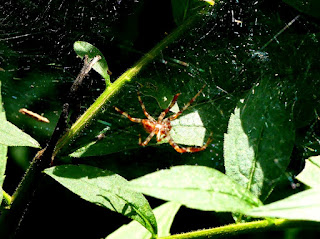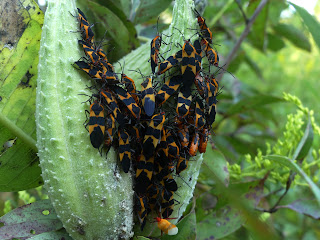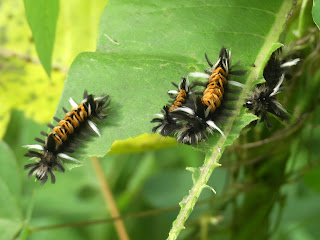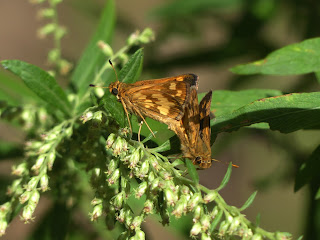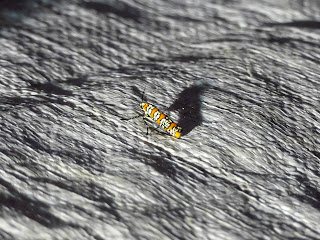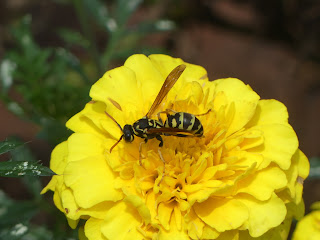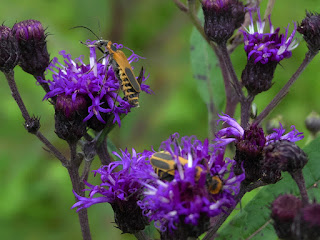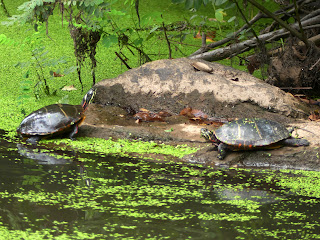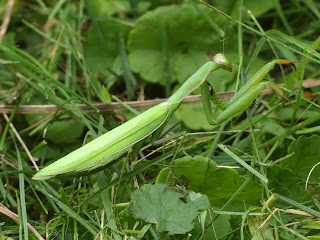Hiding American Goldfinch

Here's an American Goldfinch (presumably) trying to hide from the local paparazzi (me). As you can see, her efforts were only partially successful as she hid behind an old flowerhead. I suspect that goldfinches would still have their breeding plumage this time of the year (they are late-season breeders), and the plumage doesn't look bright/vibrant enough to be a male. Goldfinches are still around here in the winter, but it's a little hard to recognize them in their winter disguise (winter plumage). If you saw any of these guys this winter, you were seeing American Goldfinches. (There were a few of the much larger female Northern Cardinals in the video too.) Incidentally, flowers like these (some of them were Purple Coneflowers (aka Echinacea)) are popular with small seed-eating birds like goldfinches. Those flowerheads have (or maybe had) seeds in them that can provide a convenient food source for birds. September 14, 2021 at Duke Farms Photo 168281140, (c) jpviolette,

